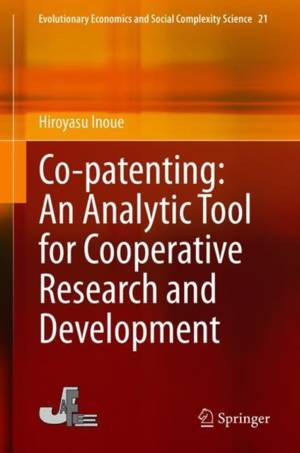
- Afhalen na 1 uur in een winkel met voorraad
- Gratis thuislevering in België vanaf € 30
- Ruim aanbod met 7 miljoen producten
- Afhalen na 1 uur in een winkel met voorraad
- Gratis thuislevering in België vanaf € 30
- Ruim aanbod met 7 miljoen producten
Zoeken
Co-Patenting: An Analytic Tool for Cooperative Research and Development
Hiroyasu Inoue
€ 167,95
+ 335 punten
Omschrijving
This is the first book that comprehensively analyses co-patenting in Japan and the U.S., which directly signifies collaborations between firms and inventors, using the methodology of network science. Network science approaches enable us to analyse the structures of co-patenting networks. In addition, generative models in network science estimate the probability of new connections between nodes, which enables us to discuss the temporal development of networks. On the other hand, regression analyses, which are broadly used in the field of economics, may be effective for determining what attributes are important for firms and inventors that are going to be connected, but such techniques cannot consider the complexity of networks. This book compiles a series of studies by the author on geographical location and co-patenting using data that were published in eight academic journal articles. This book gives the reader ideas about how we can utilize patent data to understand how firms and inventors collaborate under the effect of complex networks.
Specificaties
Betrokkenen
- Auteur(s):
- Uitgeverij:
Inhoud
- Aantal bladzijden:
- 114
- Taal:
- Engels
- Reeks:
- Reeksnummer:
- nr. 21
Eigenschappen
- Productcode (EAN):
- 9784431548065
- Verschijningsdatum:
- 21/01/2020
- Uitvoering:
- Hardcover
- Formaat:
- Genaaid
- Afmetingen:
- 156 mm x 234 mm
- Gewicht:
- 358 g

Alleen bij Standaard Boekhandel
+ 335 punten op je klantenkaart van Standaard Boekhandel
Beoordelingen
We publiceren alleen reviews die voldoen aan de voorwaarden voor reviews. Bekijk onze voorwaarden voor reviews.








